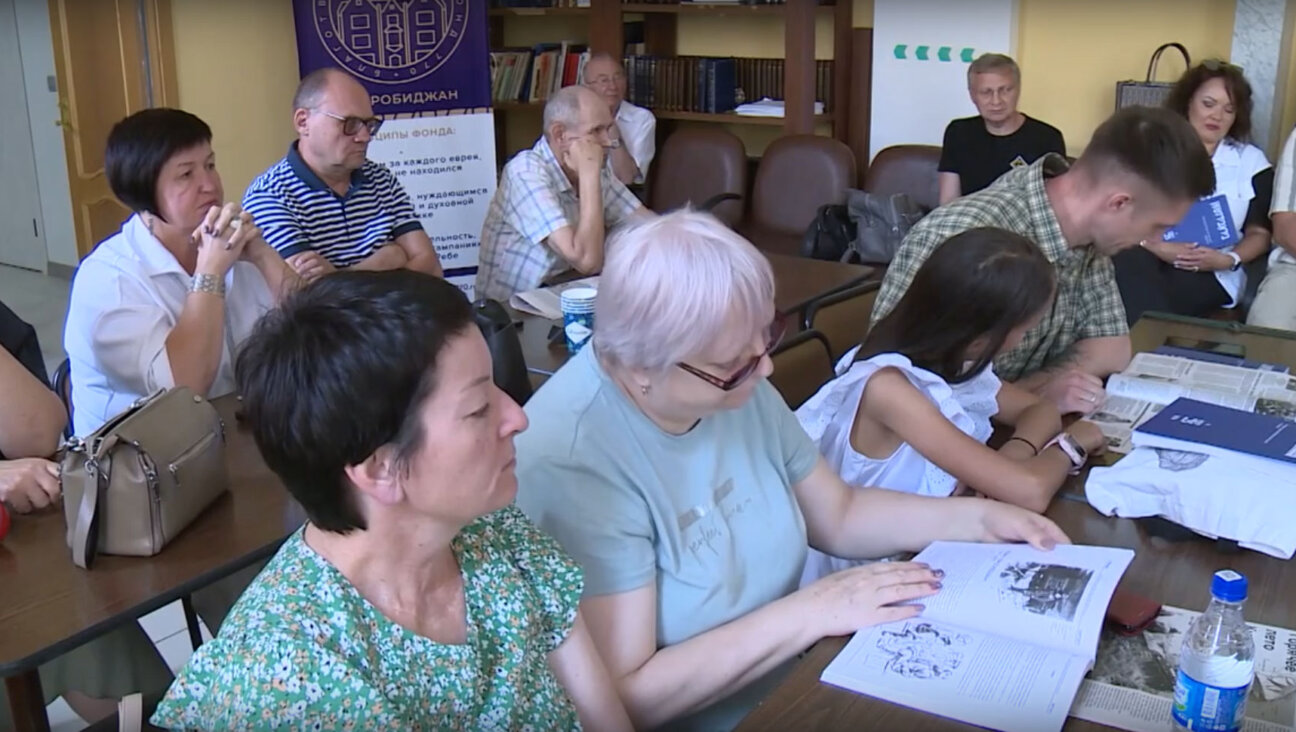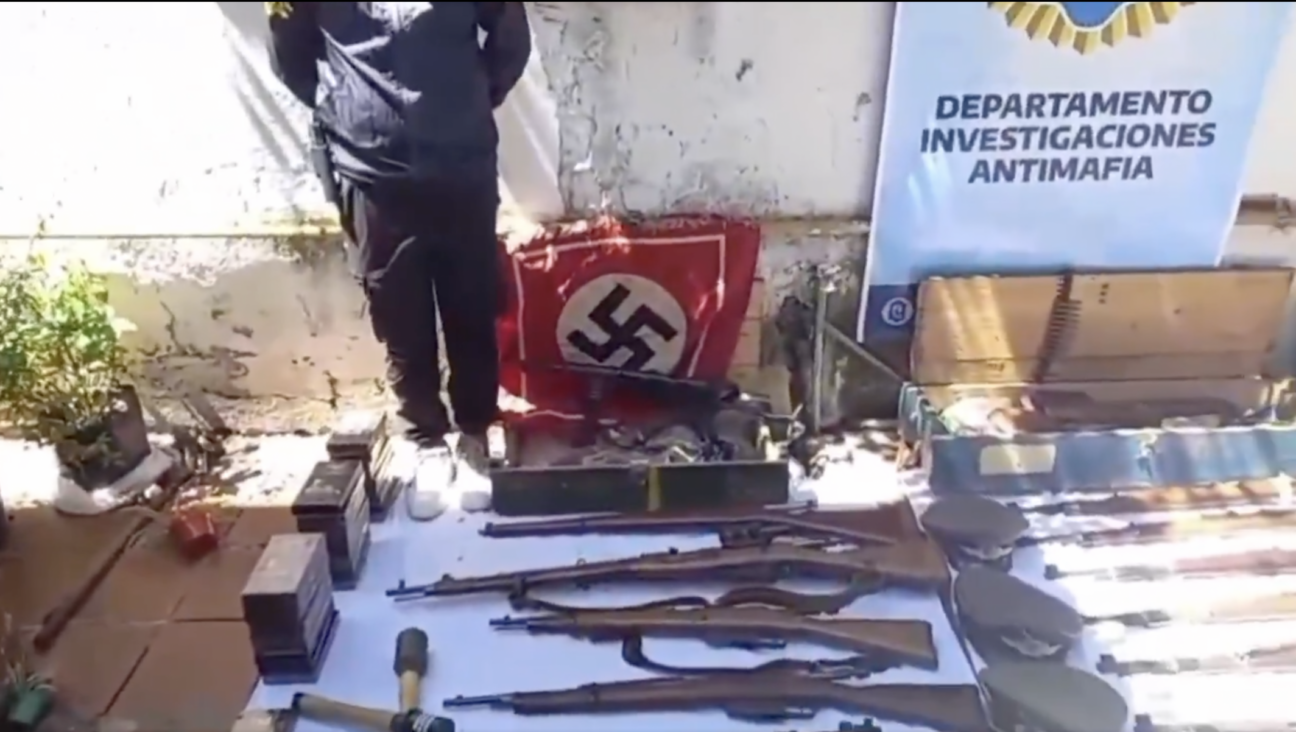Salute To U.S. Veterans
“WE THE PEOPLE’” THEME OF NYC NOVEMBER 11 VETERANS DAY PARADE
On the sunny morning of November 11, more than 12,000 military and civilian marchers were assembling for New York City’s Veterans Day Parade up Fifth Avenue. By 8 a.m., Karen — a volunteer member of the United War Veterans Council of New York County Parade Committee (she’s also my daughter and this column’s photographer) — was monitoring the assembly of the HBO-sponsored “We the People” lead float. It showcased blowups of characters excerpted from the Marine Corps comic strip that Karen created, “Private King and Company.” The strip’s multi-service, multi-ethnic cast of characters has been incorporated into the HBO-edited, UWVC-produced “Thank You for Serving” DVD, which has been entertaining troops at home, at bases overseas, in Iraq and Afghanistan, and in V.A. hospitals. Karen had a quick chat with Mayor Michael Bloomberg and Senator Charles Schumer at the Madison Square Park at East 24th Street and Fifth Avenue, where the mayor laid a wreath at the Eternal Light Monument (which dates back to Armistice Day in1918) and paid homage to those who served in wars past and present. Among the 138 marching groups and 15 bands was Butler High School’s splendorous blue, white and gold costumed, 300-strong Golden Tornado precision marching band, with its high-kicking, flag-twirling cheerleader contingent. Forward circulation director Laurence Weinberg later told me that Butler, Pa., boasts four Forward subscribers.
REMEMBERING JEWISH CHAPLAINS AT WAR — A MUST-SEE EXHIBITION
“After Pearl Harbor, more than half of the rabbis in the U.S. volunteered for duty,” informed Charles Osgood, moderator at last month’s launch of the American Jewish Historical Society’s exhibition “Jewish Chaplains at War: Unsung Heroes of the Greatest Generation, 1941-1945,” on display at the Center for Jewish History. Of the 13 million Americans who served in World War II, more than half a million were Jewish men and women, including 311 rabbis who served as chaplains in the Army, Navy, Marines and Army Air Corps. “In the eyes of the military, each Jewish chaplain was a chaplain first, and a rabbi second,” Osgood said. Rear Admiral Aaron Landes touted the Jewish chaplains who “returned to America after the war [and] played significant roles in the fight for civil rights… and [in the promotion of] interfaith relationships.” Admiral Harold Robinson, executive director of the Jewish Welfare Board, noted: “Duty overseas or in rural training camps in the American South and Southwest forced every Jewish chaplain to cooperate on an unprecedented scale with Christian chaplains, non-Jewish soldiers and Jews whose customs and beliefs were quite different from their own.… They reached across boundaries they could never have imagined crossing.… When a rabbi becomes a chaplain, he is not an Orthodox, Conservative or Reform chaplain but a Jewish chaplain serving the needs of soldiers, Jew and non-Jew alike.”
Osgood reported, “Of the rabbis who served, eight were killed in uniform, including Alexander Goode, one of the four immortal chaplains — a Jew, a Catholic and two Protestants, who, when the troop transport USS Dorchester was torpedoed in the Atlantic, gave their life jackets… to the panicked soldiers and remained on board, arms linked in prayer, as the ship sunk.” Chaplain Doniel Kramer disclosed, “One quarter of the Jewish chaplains were Orthodox rabbis [and] before the war… considered it improper to worship with Conservative or Reform Jews, much less Protestants or Catholics.” In one of the evening’s many moving moments, Kramer read a letter written by Chaplain Herbert Eskin, following the breakthrough of the Siegfried Line when he “visited Carl Denhartog, a Protestant lad from Iowa with a serious chest wound… Carl kept holding my hand… he asked me to cover him up and say a prayer. I knelt down on my knees and whispered in his ear the 23rd Psalm. He repeated it after me word-for-word, and I concluded the Psalm with ‘Through Jesus Christ, our Lord. Amen.’ He died.… Here was a devout Christian who knew me as the Jewish chaplain… at that moment, neither of us felt of having differences nor barriers.… I, a Jewish rabbi, said the last rites with a Christian in accordance with his faith.”
“My father, Rabbi Eli Bohnen, served as a chaplain with the 42nd Infantry “Rainbow” Division,” said Michael Bohnen, who read a letter by Chaplain Isaac Klein in Europe: “‘How would you like to conduct a Friday night service for a congregation like this: a pilot, bombardier and radioman who just stepped out of their plane from a mission over France; a pilot who crash-landed in German-held territory, hid for a week and picked up by paratroopers; a gunner [returning] from his 78th — yes, 78th! — mission, and a bombardier who returned from his 73rd? My biggest thrill is when I come to a service, look around and find that I still have the same congregation with no one ‘missing.’ Then the Hasid in me emerges and I conduct a service which in its joyous atmosphere is reminiscent of a Hasidim shtibl.’”
“There were never enough Jewish chaplains,” Osgood said. “Available rabbis traveled hundreds of miles each week, rain or shine, through snow or heat, in open jeeps… among the far-flung Pacific Islands, on battlefield Europe after D-Day, or the sands of North Africa.… Some Jewish chaplains assigned to remote outposts in Alaska or Korea flew thousands of miles every month to bring the prayers… or the comfort of a Kiddush to their men.”
The evening’s participants included AJHS president Sid Lapidus, AJHS chairman Daniel Kaplan, AJHS director of research Michael Feldberg, chaplains Barry Baron and Brad Hoffman, and Shira Nadich Levin, who read a 1945 letter sent by her father, Rabbi/Chaplain Judah Nadich, describing the emotional reaction by survivors in Zeilsheim, a displaced persons camp near Frankfurt, Germany, when David Ben-Gurion came to visit.
This must-see exhibit will be on display through April 30, 2008.
AMERICAN FRIENDS OF ISRAEL MUSEUM PHOTOGRAPH GALA
Among the nearly 700 spectacularly gowned and black-tie guests at the October 29 American Friends of the Israel Museum photography gala were Harriet and Noel Levine, who endowed the museum’s photography department with a $12 million gift. AFIM president Stephen Lash happily announced that “half the guests were under 50.” In keeping with the gala theme, exemplars of the museum’s photography collection — including nudes from various eras — were projected on screens around the Waldorf-Astoria’s ballroom and beamed atop the Plexiglas tables, which were under-lit in blue, pink and purple hues. Established by the late-great photographer Arnold Newman (once upon a time my boss at the American Society of Magazine Photographers), the Israel Museum now boasts one of the largest and most important photography collections in the world.
The dinner journal offered a sampling of the museum’s gems, ranging from an 1855 photo of a neglected Jerusalem by Scottish photographer James Graham (1806-1869); a 1944 montage of captured German soldiers at Stalingrad by Georgi Zelma; Weegee’s (Arthur Fellig) 1940 “Fire in Harlem;” Philippe Halsman’s 1940 portrait of Albert Einstein; Salvador Dali’s bizarre 1939 “Dream of Venus,” and stunning photographs by Brassaï, André Kertész, Diane Arbus and Alfred Stieglitz. There were also works by contemporary lesser-known artists. And then came the “goody bag” with a copy of “Surrealism and Beyond in the Israel Museum,” a five-pound tome that disclosed the museum’s extensive collection.
A message from our CEO & publisher Rachel Fishman Feddersen

I hope you appreciated this article. Before you go, I’d like to ask you to please support the Forward’s award-winning, nonprofit journalism during this critical time.
We’ve set a goal to raise $260,000 by December 31. That’s an ambitious goal, but one that will give us the resources we need to invest in the high quality news, opinion, analysis and cultural coverage that isn’t available anywhere else.
If you feel inspired to make an impact, now is the time to give something back. Join us as a member at your most generous level.
— Rachel Fishman Feddersen, Publisher and CEO





















